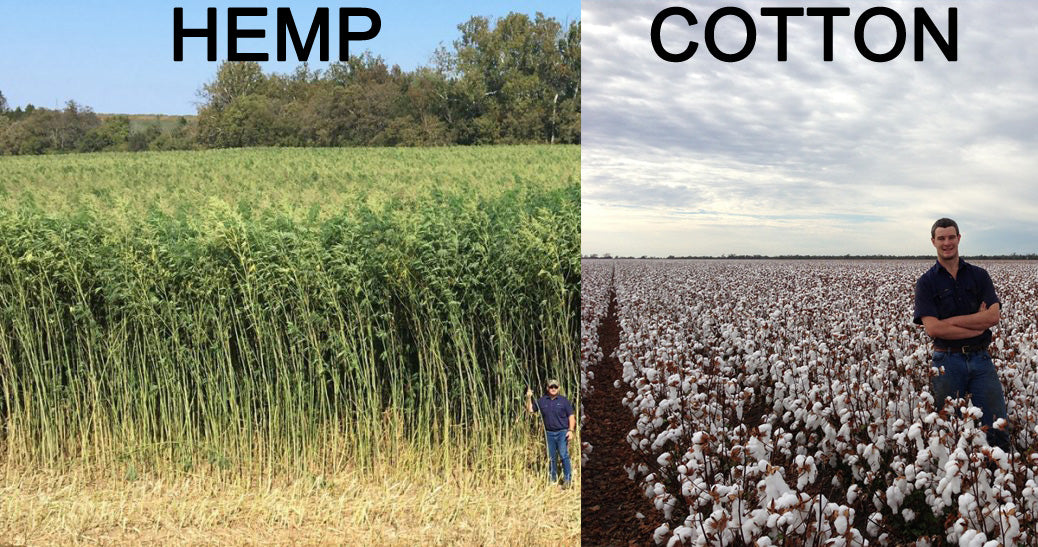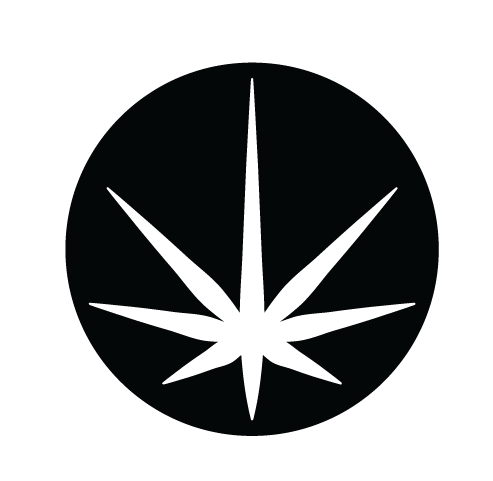
Hemp vs. Cotton
Share

In the sustainable textile industry "Hemp is King" and used by top designers like Calvin Klein, Ralph Lauren, Versace and Stella McCartney. However cotton has claimed the win when it comes to using the most harmful pesticides, chemicals, herbicides, fertilizers and water usage. The Stockholm Environment Institute Cotton vs Hemp study shows cotton takes approximately 2,500 gallons of water to produce 2lbs of usable fiber that can make a single t-shirt and pants. Hemp on the other hand only needs approximately 200 gallons to produce 2lbs dry fiber that can use 30% for fiber production. Cotton needs a tremendous amount of water to grow depleting our small amount of fresh water sources and uses 2.5 percent of the world's arable land to grow. Check out the photo below and just look at the growth difference.

Hemp can be grown very closely together within inches of each other reaching heights up to 16" within 3-4 months producing about double the fiber per acre than cotton. Hemp's efficient growing space also blocks a considerable amount of sun light from reaching the soil below keeping it moist, suppressing weeds reducing the need for harmful herbicides, chemical fertilizers and water. The hemp plant is naturally an insect deterrent and this eliminates the need for pesticides. Cotton uses 16% of the worlds pesticides relying heavily on chemicals, such as herbicides, fertilizers and insecticides. More than 15,000 lakes in the US have become so contaminated that nothing can live in them due to the chemicals leaking into them. And this number keeps increasing! The United States is the second largest cotton producer in the world and approximately 40-60% of the cotton produced is exported to other countries. About 60% of it is made into thread to produce garments like t-shirts, jackets, jeans, shorts, and accessories. Mass amounts of chemicals and water are being used right now to keep this cotton cycle going poising our land and waters. Industrial hemp will help to revitalize our land, waters and economy with its many other sustainable attributes.

Hemp is a very versatile crop and can be grown in vast climates. Cotton is not so versatile and sensitive to certain climates effecting the yield. Hemp plant taproots are strong, they can run deep and absorb soil nutrients effectively rejuvenating heavily chemical damaged soil. Cotton on the other hand uses so many chemicals it damages the soil however growing organic cotton the chemical impact is much lower. If the soil is bad the versatile hemp plants taproot remain shorter and the lateral roots become stronger developed reaching outward cleaning and detoxifying as it grows consistently. Cotton will not grow in highly damaged soil without special soil treatments and chemicals. Hemp also breaths in vast amounts of CO2 cleaning the air and soil both at the same time.

Hemp is a bast fiber, the outside potion you see separating from the inner wood core. The hemp fiber is among the strongest and longest bast fibers in the world, 3-4 times stronger and longer than cotton fibers. Hemp is very strong and durable consisting of about 70% cellulose and contain low levels of lignin approximately 8-10%. The hemp plant itself is naturally antimicrobial, mold, mildew resistant with the benefits of a synthetic yet its a sustainable natural fiber not harming the earth.
